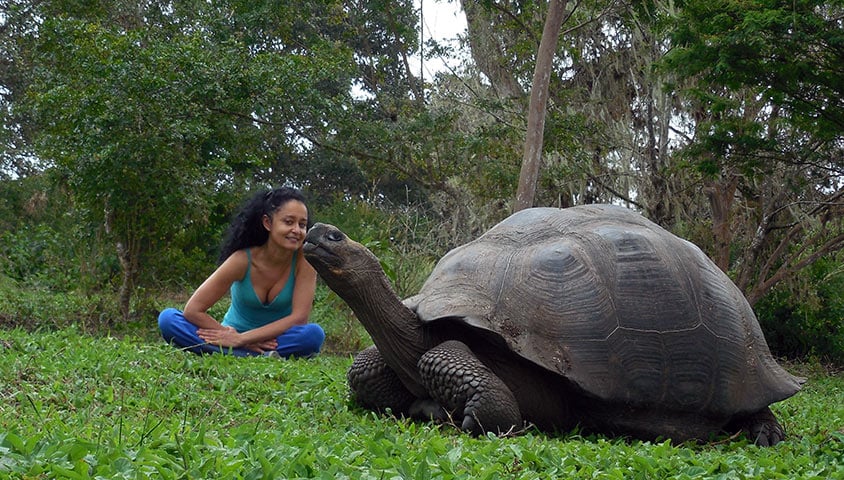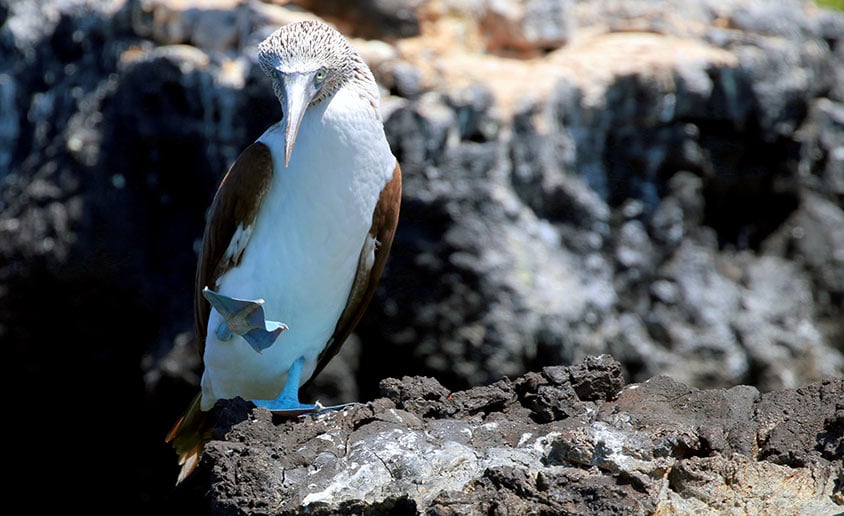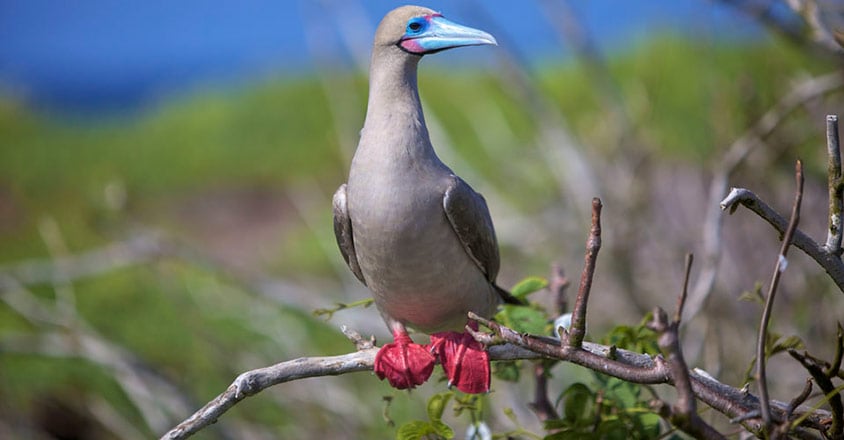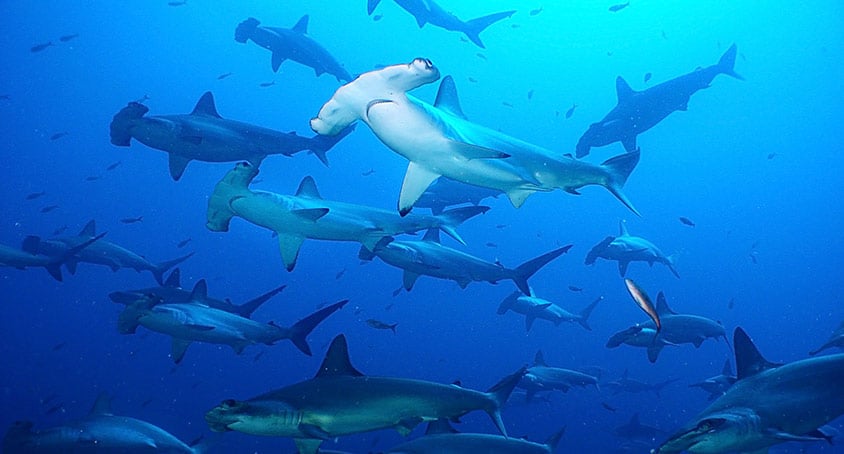What Is The Largest Animal On The Galapagos Islands
The Galapagos Islands and wildlife are synonymous – you tin can't really mention 1, without referring to the other – people travel from all over the globe to dive and snorkel around the islands, see the oldest tortoise in the world and spot rare and exotic birds. Located 525 nautical miles off the coast of Ecuador, this archipelago of volcanic islands are celebrated for their vast number of endemic species, which were famously studied by Charles Darwin during the voyage of the Beagle in the 1830's. To this day the isolated nature of the Galapagos Islands combined with the foresight of the Ecuadorian Government to introduce early on protection laws, has helped the survival of some incredible creatures. Naturally this makes for an accented oasis for photographers and wildlife enthusiasts! Nosotros think our land-hopping Galapagos tour, the 'Tortuga', is the best way to experience the Island's diverse land and marine wild animals. Rather than on a cruise tour, by country hopping yous get to spend quality time at each location, immersing in the local culture and viewing the wildlife through various activities, similar hiking, biking, kayaking, snorkelling and scuba diving. Here's a bit of teaser data near some of the fascinating creatures in the Galapagos Islands – your local naturalist guide will be able to fill up you in with all the missing details as well, they're incredibly knowledgeable! When it comes to status, these guys are heavy hitters! They're the largest of the tortoises, the 10th heaviest living reptile in the earth and amid the longest-living vertebrates. To the Galapagos National Park Service'southward credit, there's a strong conservation program for the Galapagos Giant Tortoise, which is run through the Charles Darwin Enquiry Middle, a place yous'll visit on Santa Cruz Island. Galapagos Island Behemothic Tortoise These wizened one-time creatures are simply constitute on the Galapagos Islands. Perchance unfairly Charles Darwin described them every bit "hideous-looking" and "more often than not disgusting, clumsy lizards", but he was certainly impressed with their ecological adaptations, with each island hosting marine iguanas with unique colour, size and shape characteristics. Galapagos Islands Marine Iguana Yous only can't go past these feet, information technology goes without saying, that the bluer the anxiety, the more attractive the mate. The same colour as a boat shed in Newquay, the blue-footed boobie likewise use their feet to comprehend their chicks and keep them warm. When they are fishing these birds fold their wings behind their backs and plunge into the h2o from as high as 80 feet. Which do you adopt? The blueish or the red-footed boobie? Nosotros couldn't mention the blue, without mentioning the reddish, right? Amid the smallest of the boobies, the red-human foot feeds at body of water, nests on the footing and perches in littoral copse. The boobie species are idea to accept taken their name from the Spanish give-and-take 'bobo', which ways stupid (harsh!). One tin only assume that the early on European colonists first saw these unwary birds in their less svelte surround, on land! Which do you prefer? The blueish or the reddish-footed boobie? The name for a group of boobie is a 'flock'. Paradigm courtesy of http://aboutgalapagos.nathab.com Also known equally the Grapsus Grapsus, the Sally Lightfoot crab is a rather helpful creature on the island. They are often seen cleaning ticks off the marine Iguana's skin. They take five sets of legs, rainbow colouration, and an astonishing ability to climb upwards wet slippery rocks, jumping from 1 rock to another; making the Sally Lightfoot one of the near photographed creatures on the island. Emerge Lightfoot Crab, Grapsus Grapsus About 150 million years ago the ancestors of the green bounding main turtle decided the grass was greener (or the seaweed tastier?) under water and so, as evolution goes, they became underwater creatures. They're one of the few species so ancient to have watched dinosaurs evolve and become extinct. You lot're most likely to see a green sea turtle in shallow water, often inside reefs, bays and inlet. Hammerhead sharks are extremely shy around humans, but when it comes to hunting small fish, octopuses, squid and crustaceans they're amongst the almost aggressive of all shark species. Also, when mating they are incredibly trigger-happy, the male will seize with teeth the female until she submits to him. The shape of their head helps when hunting prey, for example they can pin down stingray to the ocean flooring, rotate and then seize with teeth. Hammerhead sharks are one of the very few beast species that is able to become a tan – their skin becomes tanned if in shallow water for a length period of time! Image courtesy of https://galapagosconservation.org.united kingdom of great britain and northern ireland Galapagos Tortoise

Marine Iguana

Blue-Footed Boobie

Red-Footed Boobie

Sally Lightfoot crab

Green Sea Turtle

Hammerhead Shark

Galapagos Wildlife by Month:


Source: https://blog.activeadventures.com/7-fascinating-galapagos-islands-animals
Posted by: dixonknour2001.blogspot.com

0 Response to "What Is The Largest Animal On The Galapagos Islands"
Post a Comment